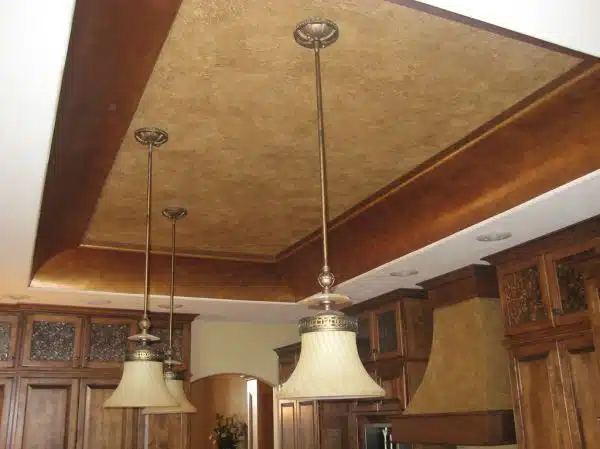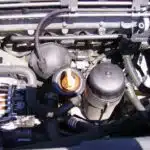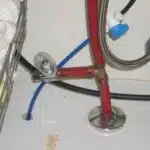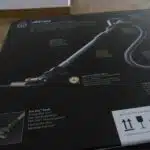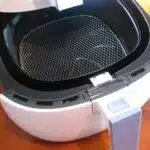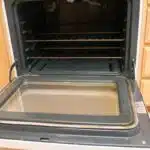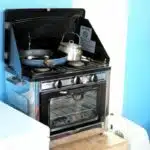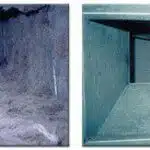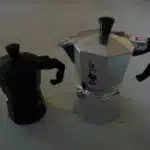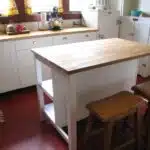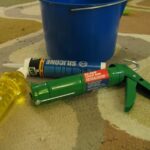A kitchen range hood is a crucial appliance that helps to remove smoke, steam, and other airborne particles from the kitchen. Over time, the filter in your kitchen range hood can become clogged with grime and grease, leading to reduced efficiency and even fire hazards. Regular cleaning of the range hood filter is essential to keep it functioning at optimal performance and maintain good air quality in your home.
Cleaning a kitchen range hood filter may seem like a daunting task, but it is an easy process that anyone can do with the right tools. In this article, we will guide you through the steps to clean your range hood filter effectively. We will also provide you with tips on how often you should clean your filter based on usage and other factors that contribute to grease buildup in your kitchen. With our expert advice, you can keep your kitchen safe and healthy while enjoying efficient ventilation for years to come.
Why Regular Cleaning Of Your Range Hood Filter Is Important
Keeping your kitchen clean is essential to maintaining a healthy home. One integral part of your kitchen that you should never overlook is the range hood filter. Regular cleaning of your range hood filter is crucial because it helps prevent hazardous particles from being released into the air in your kitchen. Neglecting to clean the filter regularly can lead to a buildup of grease and grime, which can create an unpleasant living environment.
Cleaning your range hood filter has numerous benefits for both you and your home. By eliminating harmful contaminants from the air, you’ll be able to breathe easier and enjoy better indoor air quality. Additionally, a clean range hood filter can improve appliance efficiency, helping reduce energy consumption and costs over time. However, if you’re unsure about how to clean your range hood filter effectively, it’s best to seek professional cleaning services.
Professional cleaning services have the right tools and expertise needed to get rid of all traces of dirt and grime in your range hood filter. They can also help identify any underlying issues with the appliance that may be affecting its performance. By investing in professional cleaning services for your range hood filter, you’ll be able to reap all the benefits of maintaining a clean and safe kitchen without having to worry about doing it yourself.
Signs That Your Range Hood Filter Needs Cleaning
A dirty range hood filter can cause more harm than good in your kitchen. It can lead to poor air circulation, unpleasant smells, and increased fire risks. Common causes of a clogged range hood filter include cooking greasy food, not cleaning the filter regularly, and using low-quality filters.
Prevention is key when it comes to avoiding a clogged range hood filter. Make sure to clean your filter at least once every three months. If you cook frequently or use your range hood on high heat regularly, you may need to clean it more often. Additionally, investing in a high-quality filter can reduce the frequency of cleanings needed.
To diagnose a damaged range hood filter and determine whether it needs replacement, look for signs such as reduced airflow or unusual noises coming from the fan. If the filter appears visibly dirty or clogged, it’s time for a replacement. Not replacing a damaged or clogged filter can lead to decreased performance and increased energy costs over time.
*Bullet point list:
- Cooking greasy food can cause clogs
- Regular cleaning prevents build-up
- High-quality filters last longer
- Reduced airflow signals a damaged filter
Moving forward, understanding how to diagnose and prevent issues with your range hood filter is essential for maintaining optimal performance in your kitchen. In the next section, we will discuss what tools you’ll need for cleaning your range hood filter effectively without damaging it further.
Tools You’ll Need For Cleaning Your Range Hood Filter
Before you start cleaning your range hood filter, it’s essential to gather the necessary tools. These include a large sink or bucket, a degreasing agent, warm water, gloves, and a scrub brush. The degreasing agent can be either a store-bought cleaner or a homemade mixture of baking soda and vinegar. Additionally, make sure to have enough space to carry out the cleaning process.
Best practices when it comes to cleaning your range hood filter involve taking regular maintenance measures. This includes wiping down the exterior of the hood with a soft cloth after each use and regularly checking for buildup inside the hood. Experts recommend cleaning the filter once every two months or more frequently depending on usage. Neglecting proper maintenance can lead to fire hazards and decreased efficiency in removing smoke and odors from your kitchen.
Maintenance tips for keeping your range hood filter clean also involve using appropriate detergents and avoiding abrasive materials that may damage the filter’s surface. When handling metal filters, avoid bending them as this can compromise their structure. Also, avoid soaking aluminum filters in water for extended periods as they may discolor or corrode over time. Regular upkeep will ensure that your range hood continues to function optimally while prolonging its lifespan.
Moving onto the next step, let’s take a closer look at how to remove your range hood filter without causing any damage.
How To Remove Your Range Hood Filter
Before attempting to remove the range hood filter, it is important to turn off the power to the hood.
The filter should then be carefully removed from the range hood, paying close attention to any instructions provided by the manufacturer.
The filter can then be cleaned with a damp cloth, using warm soapy water and a mild detergent if necessary.
Once the filter is thoroughly cleaned, it should be dried and re-installed in its original position.
Preparing The Filter
Filter maintenance is a crucial aspect of keeping your kitchen range hood working efficiently. Just like any other appliance, your range hood filter needs regular cleaning to function optimally. Preparing the filter for cleaning is the first step in ensuring that it stays in good condition and lasts longer. You need to start by turning off the power source to avoid electrocution while handling the filter.
After turning off the power supply, remove the filter from its housing and place it on a flat surface. If you have a metal filter, you can use hot water mixed with dishwashing detergent to clean it. If your filter is made of charcoal or paper, you will have to replace it since these filters are not reusable. Before replacing it, ensure that you buy the right size of filter for your hood and that it fits perfectly.
Filter replacement is another critical aspect of maintaining your kitchen hood range. Over time, filters become clogged with grease and dirt particles, which reduces their efficiency in trapping smoke and odors. To avoid this problem, replace your filters regularly depending on how often you use your range hood. For instance, if you use your stove daily, then replace the filters every three months. However, if you rarely cook or use your range hood occasionally, then replacing them once per year should be sufficient.
In conclusion, preparing your kitchen range hood filter for cleaning involves switching off power supply and removing it from its housing. Clean metal filters using hot water mixed with dishwashing detergent while replacing charcoal or paper ones after they become dirty or clogged with grease particles. Regularly replacing filters is essential for maintaining optimal performance of the kitchen hood range as well as preventing respiratory problems caused by inhaling contaminated air from cooking fumes.
Cleaning The Filter
Maintaining a clean kitchen is essential, and this includes maintaining your range hood filter. Cleaning the filter is an important aspect of keeping your range hood working efficiently. Over time, filters accumulate grease and dirt particles which can reduce their effectiveness in trapping smoke and odors. Therefore, it is necessary to clean or replace them regularly to ensure optimal performance.
Cleaning frequency depends on how often you use your range hood. If you are someone who cooks frequently, then it would be best to clean the filter once a month. However, if you rarely cook or use your range hood occasionally, then cleaning every three months should suffice. Deep cleaning techniques for metal filters involve soaking them in hot water mixed with dishwashing detergent for about 10-15 minutes before rinsing them thoroughly and allowing them to air dry.
In conclusion, maintaining a clean range hood filter is crucial for optimal performance of your kitchen appliance as well as preventing respiratory problems caused by inhaling contaminated air from cooking fumes. Regularly cleaning the filter or replacing it when necessary will help keep your range hood working efficiently while ensuring that the air in your kitchen remains fresh and clean.
Preparing Your Filter For Cleaning
After removing your range hood filter, it’s time to prepare it for cleaning. You’ll want to start by gathering the necessary supplies. Grab a large bucket or basin, dish soap, and a scrub brush. Make sure the sink is empty so you have plenty of space to work.
Next, give your filter a thorough inspection. Has it been a while since you last cleaned it? If so, you may notice a buildup of grease and grime that has accumulated over time. Filter maintenance is important not only for keeping your kitchen clean but also for maintaining the longevity of your range hood. Cleaning frequency will depend on how often you use your stove and how much cooking you do.
Now that you’ve prepared yourself and your filter, it’s time to get started with the cleaning process. Using hot water and dish soap, soak the filter in a large basin or bucket for about 10 minutes. This will help loosen any dirt or grease stuck to the filter. Once soaked, use a scrub brush to gently remove any remaining debris. Rinse thoroughly with hot water and allow it to air dry completely before reattaching it to your range hood.
- Use gloves when handling dirty filters
- Clean filters at least once every three months
- Consider replacing filters if they are damaged or excessively dirty
Cleaning your range hood filter with soap and water is an effective way to maintain its cleanliness and ensure optimal performance. However, if you prefer an alternative method, there are also commercial degreasers available that can be used on metal filters. No matter which method you choose, regular maintenance is key to keeping your kitchen clean and functional.
Cleaning Your Filter With Soap And Water
After removing the filter from your kitchen range hood, it is time to clean it with soap and water. This method is simple, yet effective and can help you maintain a clean and healthy kitchen environment. To start, create a mixture of warm water and dish soap in a container or sink. Submerge the filter into the solution and let it soak for about 10-15 minutes.
After soaking, scrub the filter using a soft-bristled brush to remove any stubborn grease or grime. Pay extra attention to the corners and edges where grease accumulates more easily. Rinse the filter thoroughly with warm water until all soap residue is gone, then dry it off completely before placing it back into your range hood.
Alternative methods for cleaning your kitchen range hood filter include using vinegar or baking soda solutions. However, these methods may not be as effective as using soap and water since they may not remove all the built-up grease on your filter. Additionally, vinegar has a strong smell that may linger in your kitchen after cleaning.
Pros and cons to consider when choosing between different cleaning methods include effectiveness, cost, and convenience. While vinegar and baking soda are cheaper alternatives to dish soap, they may require more effort during cleaning due to their weaker degreasing properties.
Moving forward, using degreaser to clean your filter is another effective method that will be discussed in detail in the subsequent section.
Using Degreaser To Clean Your Filter
After thoroughly cleaning your kitchen range hood filter with soap and water, you may still notice some stubborn grease and grime that just won’t budge. This is where using a degreaser can come in handy. A degreaser is a powerful cleaning agent that breaks down and removes stubborn grease and oil from surfaces.
When it comes to using a degreaser to clean your range hood filter, there are both pros and cons to consider. The main advantage of using a degreaser is its effectiveness in breaking down tough grease buildup, making it easier to rinse away with water. However, some degreasers can be harsh on certain materials, so it’s essential to choose the right one for your specific filter material.
Some of the best degreasers for range hood filters include heavy-duty options like Krud Kutter or Simple Green. These products are designed to dissolve even the most stubborn grease deposits, leaving your filter looking like new again. To use these types of degreasers, simply spray them onto your filter and let them sit for several minutes before rinsing thoroughly with hot water.
Soaking Your Filter In Vinegar And Baking Soda
If you are looking for an effective way to clean your kitchen range hood filter, soaking it in a solution of vinegar and baking soda can be a great option. Vinegar is a natural cleaning agent that can help break down grease and grime, while baking soda can provide some extra scrubbing power. Using these two ingredients together can create a powerful cleaning solution that can help restore your filter to its original condition.
Alternative cleaning methods are becoming increasingly popular among homeowners who want to avoid harsh chemicals and synthetic cleaners. Using natural cleaning solutions like vinegar and baking soda can offer several benefits, including being gentler on surfaces, minimizing waste, and reducing exposure to potentially harmful chemicals. With just a few simple ingredients from your pantry, you can effectively clean your range hood filter without having to resort to chemical-laden products.
To use this method, start by mixing equal parts vinegar and hot water in a large container. Add about 1/4 cup of baking soda to the mixture and stir until it begins to fizz. Then, submerge your range hood filter in the solution and let it soak for at least 30 minutes (or longer if needed). After soaking, rinse the filter thoroughly with hot water and allow it to dry completely before reattaching it to your range hood.
Transition: While soaking your range hood filter in vinegar and baking soda is an effective way to remove grease buildup, there is another option that may be even more convenient – using a dishwasher.
Using A Dishwasher To Clean Your Filter
Have you ever experienced the frustration of trying to clean a greasy kitchen range hood filter? Fear not, for there is an effective alternative to hand washing. Using your dishwasher to clean your filter can save you time and effort.
One of the benefits of using a dishwasher is that it thoroughly cleans your filter without requiring any extra elbow grease on your part. All you need to do is remove the filter from your range hood, place it in the dishwasher, and run it through a regular cycle with your preferred detergent.
However, if you don’t have access to a dishwasher or prefer hand washing, there are still alternative methods available. Hand washing allows you to control the level of cleanliness and gives you more flexibility in terms of choosing cleaning solutions. You can use warm soapy water or even specialized degreasers for tougher stains. Just be sure to rinse thoroughly before letting it dry.
Now that we’ve discussed both dishwasher alternatives and the benefits of hand washing, let’s move on to drying your filter after cleaning without damaging it.
Drying Your Filter After Cleaning
- Prior to removing the kitchen range hood filter, it is important to have a dry, clean towel on hand.
- When removing the filter, it is important to ensure that the filter is handled safely so that it is not damaged.
- Once the filter has been removed, it is necessary to rinse it off with warm water.
- After rinsing the filter, it is important to make sure that it is thoroughly dried.
- To dry the filter, it is recommended to place the filter on a towel and allow the filter to air dry.
- Once the filter is dry, it should be re-installed back into the range hood.
Preparing A Towel
As a home cleaning expert, it is essential to know how to dry your kitchen range hood filter after cleaning. After all the effort you put into removing the grease and grime buildup, it would be unfortunate if you did not dry it correctly. Preparing a towel is an excellent way to ensure that you are drying your filter effectively.
Rolling the towel tightly is crucial when preparing it for use. It helps increase its absorbency and ensures that there are no lumps or bumps that could leave marks on your clean filter. Once rolled tightly, soak the towel in warm water mixed with your preferred cleaning solution. This mixture should be enough to remove any residual grease or dirt from your filter.
Once you have prepared the cleaning solution and rolled your towel, it’s time to start drying your filter. Place the wet filter on top of the rolled towel and carefully roll it up together with the filter inside. Gently press down on the bundle, ensuring that all excess water is absorbed by the towel. Once done, open up the bundle and lay out both items flat on a clean surface until they are completely dry.
Safely Removing The Filter
Once you have finished cleaning your kitchen range hood filter, the next step is to dry it properly. However, before drying it, it’s crucial to understand how to safely remove the filter from your range hood. If not done correctly, you could cause damage to yourself or your equipment.
Removing the filter is a simple process that requires some safety precautions. Ensure that the range hood is turned off and disconnected from its power source. Next, use protective gloves to prevent cuts or scratches and carefully remove the filter from its position. Avoid using excessive force as this could damage the filter or break its clips.
Once you have removed the filter safely, you can proceed with drying it using a towel as discussed in our previous subtopic. By following these instructions for removing and drying your kitchen range hood filter, you will keep both yourself and your equipment safe while ensuring that your filter remains functional for longer periods.
Air Drying The Filter
Proper maintenance of your kitchen range hood filter is essential for ensuring its optimal performance. As discussed in the previous subtopic, cleaning the filter is a crucial step that should be followed by drying it thoroughly. Air drying the filter is one of the most effective methods to ensure that it dries completely without causing any damage.
Air drying is an easy and affordable way to dry your kitchen range hood filter after cleaning. Once you have cleaned the filter using quick cleaning tips such as soaking it in vinegar or washing it with warm soapy water, you can proceed with air drying. Simply place the filter on a clean towel or cloth and let it dry naturally for several hours or overnight.
When air drying your kitchen range hood filter, you must choose a well-ventilated area to prevent mold or mildew growth. Avoid keeping the filter in damp or humid areas such as basements or bathrooms. Additionally, make sure that the towel or cloth used for drying is clean and free from any debris that could stick to the wet filter. By following these simple steps for air drying your kitchen range hood filter, you can keep it in good condition for longer periods while ensuring that your family breathes clean air.
Reinstalling Your Range Hood Filter
Now that you have successfully cleaned your range hood filter, it is time to reinstall it. Proper maintenance and regular inspection of your range hood filter are key to ensuring its longevity and effectiveness. Neglecting to properly clean and maintain your range hood filter can lead to decreased air quality in your kitchen, increased energy costs, and potential fire hazards.
When reinstalling your range hood filter, it is important to ensure that it fits snugly back into place. If the filter does not fit correctly, it may allow grease and other debris to build up in areas that are not intended for accumulation. This can compromise the effectiveness of the filter and lead to a variety of issues down the line.
To ensure that your range hood filter stays clean and effective, be sure to schedule regular inspections and cleaning sessions. A good rule of thumb is to clean your range hood filter at least every six months if you use your stove regularly. However, if you cook frequently or use high-heat cooking methods often, you may need to clean your filter more frequently than this recommended interval. By maintaining proper care for your range hood filter, you can keep your kitchen air safe and healthy for years to come.
Moving forward, it is important to understand how often you should clean your range hood filter. Regular inspection of the condition of the filter will help determine when cleaning is necessary. The frequency with which you use your stove will also play a role in determining how often cleaning should occur. In the next section, we will explore these factors in greater detail so that you can make an informed decision about when it’s time for another cleaning session.
How Often You Should Clean Your Range Hood Filter
Cleaning your range hood filter is an essential task that should be performed regularly. The frequency of cleaning your range hood filter depends on how often you cook. If you cook frequently, it is recommended that you clean the filter at least once a month. However, if you only use your range hood occasionally, cleaning it every three to six months should suffice.
Cleaning your range hood filter provides numerous benefits. First and foremost, it helps to maintain good air quality in your kitchen by reducing the amount of grease and smoke particles that can accumulate on the filter over time. A dirty range hood filter can also reduce the efficiency of your exhaust system, which can cause odors and smoke to linger in your kitchen longer than necessary. Additionally, regular cleaning can help extend the life of your range hood by preventing damage from built-up grease and debris.
In summary, cleaning your range hood filter is an important task that should not be overlooked. The frequency with which you clean it will depend on how often you cook in your kitchen. Regular cleaning provides several benefits including improved air quality, increased efficiency of your exhaust system, and extended lifespan for your range hood. In the next section, we will discuss other tips for maintaining your range hood so that it continues to function optimally for years to come.
Other Tips For Maintaining Your Range Hood
- Regularly scheduling cleanings for your range hood is important for ensuring that it continues to function properly.
- Cleaning the exterior of the range hood should be done to prevent the buildup of dirt and grease.
- The fan, vent and filter of the range hood should be inspected periodically for any signs of wear and tear that may require replacement.
- Cleaning the filter of the range hood requires disassembling it, soaking it in a degreasing solution and then scrubbing it with a brush before reassembling and placing it back.
Regularly Scheduling Cleanings
Regularly scheduling cleanings is beneficial for maintaining the efficiency and longevity of your range hood. Cleaning frequency will depend on how often you use your stove and how much grease and smoke are generated during cooking. Generally, it is recommended to clean the filter every three to six months.
Scheduling benefits include ensuring that your range hood is functioning at its best, as a clogged filter can reduce airflow and increase noise levels. Regular cleaning also prevents grease buildup, which can be a fire hazard. Additionally, keeping your range hood clean enhances the overall appearance of your kitchen.
To determine the appropriate cleaning frequency for your range hood filter, consider factors such as cooking frequency, cooking methods and types of food cooked. If you cook frequently with high heat or fry foods often, you may need to clean the filter more frequently. It’s always better to err on the side of caution and clean more often than needed to avoid potential problems.
In conclusion, regularly scheduling cleanings is a crucial aspect of maintaining your range hood and ensuring its optimal performance. By determining an appropriate cleaning frequency based on usage patterns and adhering to it consistently, you can enhance the efficiency and lifespan of your range hood while keeping your kitchen safe and looking great.
Cleaning The Exterior
Now that we’ve discussed the importance of scheduling regular cleanings for your range hood’s filter, let’s move on to another crucial aspect of maintaining your range hood: exterior maintenance. Keeping the exterior of your range hood clean is just as important as cleaning the filter because it helps prevent grease and grime buildup, which can lead to discoloration and corrosion over time. By taking preventative measures and following a few simple steps, you can keep your range hood looking like new for years to come.
To begin with, start by wiping down the exterior of your range hood after each use with a soft cloth or sponge. This will help remove any splatters or spills before they have a chance to harden or stain. For tougher stains or grease buildup, use a mild dish soap mixed with warm water and a non-abrasive scrubbing pad. Avoid using harsh chemicals or abrasive cleaners that could scratch or damage the surface of your range hood.
Finally, don’t forget about the vent cover! The vent cover is often overlooked during cleaning but can become caked with grease over time, reducing airflow and efficiency. To clean the vent cover, simply remove it from the range hood and soak it in warm soapy water for 10-15 minutes before scrubbing with a non-abrasive brush. Rinse thoroughly and allow to dry completely before reattaching to the range hood.
By following these simple tips for exterior maintenance and taking preventative measures, you can keep your range hood looking great while also ensuring its optimal performance. Remember to clean up spills and splatters immediately, use gentle cleaners and avoid harsh chemicals, and don’t forget about the vent cover!
Troubleshooting Common Range Hood Filter Issues
A range hood is like a guardian angel in your kitchen, protecting you from airborne grease and unpleasant odors. However, just like any other kitchen appliance, it can accumulate grime over time. To keep your range hood working optimally, it’s important to clean the filter regularly. If you neglect this task, your range hood filter won’t be able to do its job effectively.
Preventing buildup is key to ensure that cleaning your range hood filter doesn’t become a daunting task. One way to do this is by wiping down the exterior of the range hood after each cooking session. Also, avoid using harsh chemicals or abrasive sponges when cleaning the filter as they can cause damage. Instead, use warm soapy water and a soft-bristled brush.
Removing stubborn grime from your range hood filter requires a bit more effort. Start by removing the filter from the range hood and soaking it in hot water with dish soap for 10-15 minutes. Then, scrub it gently with a soft-bristled brush or sponge before rinsing it thoroughly with hot water and letting it air dry completely before reinstalling it back into the range hood.
Remember to regularly clean your range hood filter preventatively, but also know when it’s time to replace it altogether. In our next section, we will discuss how to identify when your range hood filter needs replacing and what steps you should take next.
When To Replace Your Range Hood Filter
After troubleshooting common range hood filter issues, it’s time to discuss one of the most important aspects of maintaining a kitchen range hood – cleaning the filter. A dirty filter can lead to poor ventilation and even pose a fire hazard in extreme cases. Cleaning your range hood filter regularly is crucial in keeping your kitchen safe and healthy.
Before diving into the cleaning process, it’s essential to know when to replace your range hood filter. Signs of filter replacement include reduced suction power, visible damage or wear and tear, foul odors, or discoloration. Regularly replacing your filter not only ensures proper ventilation but also prolongs the lifespan of your range hood while saving you money on repairs and replacements.
Cleaning a kitchen range hood filter is relatively easy and requires minimal effort and equipment. The following table provides a step-by-step guide to clean different types of filters effectively:
| Type of Filter | Cleaning Method |
|---|---|
| Mesh Filters | Soak in hot water with dish soap for 10-15 minutes, scrub with a brush, rinse thoroughly |
| Baffle Filters | Soak in hot water with baking soda for 10-15 minutes, scrub with a brush, rinse thoroughly |
| Charcoal Filters | Cannot be cleaned and should be replaced every 6-12 months |
In conclusion, cleaning your kitchen range hood filter should be an essential part of your routine home maintenance tasks. Not only does it improve air quality by removing harmful pollutants from cooking fumes but also helps avoid potential fire hazards caused by grease buildup. By regularly replacing the filters as needed, you can ensure optimal performance from your range hood while simultaneously extending its lifespan.
Conclusion
Regular cleaning of your range hood filter is crucial to maintaining the functionality and efficiency of your kitchen. Signs that your range hood filter needs cleaning include excessive smoke or steam, unpleasant odors, and decreased air flow. To clean your filter, gather tools such as hot water, dish soap, and a scrub brush. Removing the filter, preparing it for cleaning, and regularly cleaning it will ensure optimal performance.
Maintaining a clean range hood not only improves its effectiveness but also symbolizes cleanliness in our lives. A dirty range hood reflects a cluttered mind which can lead to an unproductive lifestyle. Just as we need to clean our range hood filter regularly to avoid clogging, we must take time to reflect on our thoughts and emotions, decluttering the negative ones that can hinder our growth. Similarly, taking care of our physical surroundings can have a positive impact on our mental well-being. Remember to maintain your range hood by cleaning it regularly for optimal functionality and use this as a reminder to declutter your life for improved productivity and peace of mind.
Image Credits
- “Kitchen – Ceiling – Range Hood – Italian Finishes – Bella Faux Finishes – Sioux Falls, South Dakota” by BellaFauxFinishes (featured)

